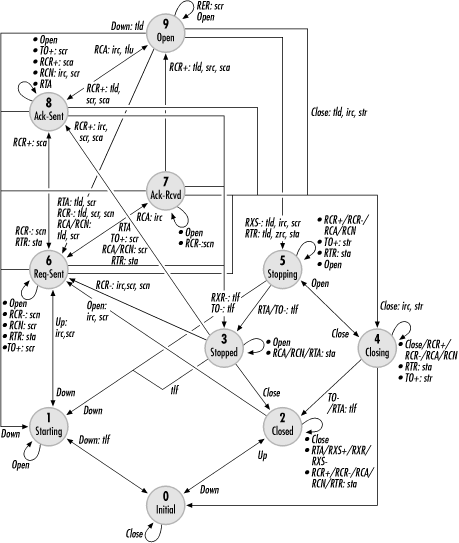Link Control Protocol (LCP)
Data links come in many flavors with widely varying properties. PPP was intended to operate over all types of physical links, so it includes the Link Control Protocol. LCP allows two endpoints of a connection to negotiate encapsulation options when the data link is initialized and can monitor the link quality to ensure that quality is not slowly degrading.
Configuration option negotiation is an interesting departure from other types of negotiations in the networking world. In PPP, the transmitted requests are requests to the remote end on the inbound data. PPP allows the local end to specify what it will receive, not to tell the remote end all the things the local end can send.
LCP uses three classes of packets:
Link Configuration packets negotiate options.
Link Termination packets tear down the link.
Link Maintenance packets ensure continued operation of the link.
The LCP State Engine
LCP is described as a state engine by the standard. A link may be in one of several states, and certain events cause transitions between the states. Figure 9-6 shows a simplified diagram of the LCP state engine. Each state in the diagram is numbered. For quick reference, these states are also described in Table 9-4:

Figure 9-6. PPP state engine
Initial
All links begin in the Initial state. Physical links are down, and no administrative actions have been taken to bring ...
Get T1: A Survival Guide now with the O’Reilly learning platform.
O’Reilly members experience books, live events, courses curated by job role, and more from O’Reilly and nearly 200 top publishers.

